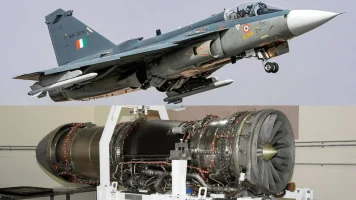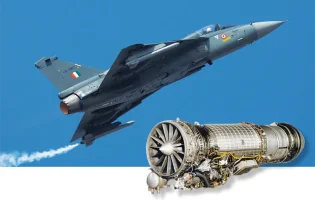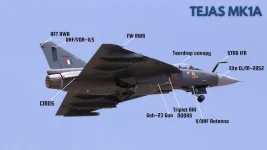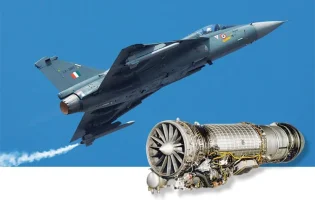- Views: 5K
- Replies: 46
India's goal to become a major global defence exporter is facing a critical challenge, with its ambition to sell indigenous Tejas fighter jets being constrained by a reliance on foreign-made components.
Defence experts assert that for India to independently market its Tejas Mk1A and the upcoming Mk2 variants, the government must commit to fully funding the indigenous Kaveri 2.0 engine project.
This strategic investment is seen as essential to break free from the control of international suppliers, particularly the United States, whose American-made engines give it authority over where the Indian aircraft can be sold.
The Tejas Mk1A, a cornerstone of the Indian Air Force's modernisation plans, is currently equipped with the F404 engine from American company General Electric (GE). The more advanced Tejas Mk2 is planned to operate with the more powerful GE F414 engine.
This dependence on U.S. technology places the Tejas program under American export control laws, including the International Traffic in Arms Regulations (ITAR).
Consequently, the United States can restrict or veto the sale of these jets to potential international customers based on its own foreign policy and geopolitical interests.
This limitation significantly undermines India's strategic independence and its ability to tap into a growing international demand for affordable, high-performance fighter aircraft.
A homegrown solution, the Kaveri 2.0 engine, is being developed to address this vulnerability. This advanced engine, managed by the Gas Turbine Research Establishment (GTRE), is being designed to provide the necessary power for both the Tejas Mk1A and Mk2 jets.
According to defence analysts, successfully integrating a domestically produced engine would be a game-changer, allowing India to pursue export opportunities without needing clearance from another nation.
Furthermore, offering an aircraft with a fully indigenous engine would greatly enhance its attractiveness to foreign buyers by demonstrating India's technological capabilities and offering more straightforward maintenance and support agreements.
The development of a domestic jet engine has been a long-standing national goal for India.
The original Kaveri engine program, which began in the 1980s, was unable to produce the required thrust and encountered technical difficulties, preventing its use in the Tejas fighters.
However, the revived Kaveri 2.0 project aims to succeed where its predecessor fell short, reportedly benefiting from technological advancements and potential collaboration with international partners like France's Safran.
Experts argue that decisive government funding is now the crucial element needed to accelerate development, complete rigorous testing, and clear the path for the engine's integration into the Tejas fleet, thereby strengthening India's entire aerospace industry.
The international market for lightweight multi-role combat aircraft is highly competitive, featuring jets such as South Korea’s KF-21 Boramae and Turkey’s Kaan.
The Tejas is positioned as a cost-effective and capable option for nations across Asia, Africa, and Latin America, with countries like Argentina, Egypt, and the Philippines having previously shown interest. However, the constraint of foreign-supplied engines remains a primary obstacle.
The call to prioritise and fund the Kaveri 2.0 is therefore not just a technical requirement but a strategic necessity for ensuring the Tejas can compete freely and establish India as a self-reliant and significant power in the global defence market.





